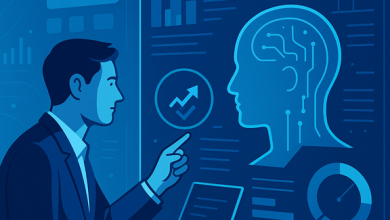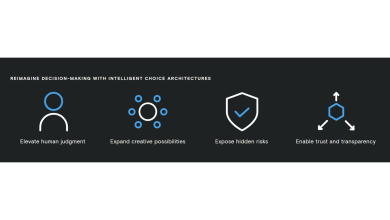
As we near the latter half of 2025, it’s a wonder that buying business software still feels stuck in the early 2000s. Even though CRM platforms, sales tech stacks, and enablement tools have attracted massive investments, buying software remains an often painful, and fragmented experience.
A typical sales journey includes mazes of emails, multiple content portals, and continually delayed promises to test the product – all leading to a pricing or negotiation discussion with no clear idea how the software works.
The result? Deals are fizzling out, not because buyers aren’t interested, but because the process is too disjointed to withhold momentum, especially in today’s Amazon-first commerce era where convenience is king. With this in mind, it’s no surprise that according to Gartner, 75% of B2B buyers now prefer a rep-free, self-guided experience. Buyers are craving the opportunity to explore and educate at their own speed, engaging with sellers only when necessary to seal the deal.
Now, AI is turning this historically inefficient process on its head.
AI: Enabling a more human sales experience
As all business units race to harness AI, sales is no exception. Whether streamlining a buyer’s POV, crafting the perfect demo storyline, or acting as a liaison between buyer to seller, AI now serves as an interactive support system across the SaaS sales pipeline.
According to research from Gartner, sellers who garner buyer intelligence increase account growth by 5%. This serves as a crucial factor for sellers to understand market trends, business priorities, and how to position their solution for each potential buyer’s needs. By integrating AI in sales, the focus shifts from manual research to analyzing insights on behalf of sellers, offering more time to connect with the buyer, close a deal, and foster customer value.
By 2027, 95% of seller research workflows will begin with AI. However, AI today is by no means a replacement for the people-centered work that is crucial throughout the sales process. Human touch, however, remains irreplaceable. AI simply doesn’t understand frustration, doesn’t know exhaustion, and can’t empathize the way a human does. In sales, where human interaction drives home the last mile of a deal, the reality is that AI cannot yet replicate that experience.
Rather, we can work to humanize this new hybrid experience, with human and AI collaborating to streamline dated parts of the cycle. With AI handling manual customer research, sellers can strategically focus on applying that information to cultivate human connection and deeper relationships. One day AI may be buying software from AI, but in the meantime, it’s being best used to make the sales experience feel more human, not less.
Today, buyers not sellers, lead the way
The sales cycle is no longer linear. So why are we still acting like it is? As sales, marketing and software companies shift towards more self-serving, data informed buying platforms, this new era of buying requires updated sales infrastructure.
Imagine you need a new shirt. You see one in the store window that you think will work. You just need to know if it’s the right fit. Instead of walking in and trying things on at your own pace, you are confronted by a retail representative who controls your interaction with the shirt.
Before you can try on clothes, you must reserve a dressing room, share your email, and give them your credit card. This all occurs before you even decide to buy the shirt. Now, instead of enjoying your retail therapy, you leave without your purchase, frustrated that the process prevents you from purchasing what you intended.
To truly usher in a new era of sales, we need to pair AI’s capabilities and opportunities with structural changes to the historical way SaaS has been bought and sold, beginning with how we create the environments in which deals happen.
Interactive Deal Rooms (IDRs), offer a dynamic and collaborative environment, inviting potential sellers and buyers to collaborate and keep all materials, communications, case studies and more in one interactive setting. By aligning the buying experience with present-day B2B decision-making processes, buyers can now educate themselves at their own speed, with sellers a step removed, allowing for streamlined decision making.
Are we entering the fast fashion era of SaaS?
Recently, Sam Altman predicted that the SaaS space is on the heels of a fast fashion-type revolution. Sales teams are more important than ever to support the everchanging economic climate, to help businesses through 2026 and beyond, and to empower companies to rethink not only what they are buying, but how they are buying it.
As industries race to harness AI, sales are no exception. Budgets are monitored with a close eye, with the opportunity to lean out sales teams if AI can help to bridge those gaps, at a cheaper cost. However, we risk entering this “fast fashion” era of sales if AI is producing software at a cheaper, rapid rate.
Fears are growing that incumbent software makers may be at risk of heightened competition, if AI tools now enable applications to be made faster and cheaper. By adopting AI at this scale, sales teams need to match rising machine analysis with a humanized approach. Pitching a product day in day out, without recognizing what is on the other end won’t help organizations hit quotas.. By aligning with buyer’s pain points and understanding their end goal, sellers can formulate the narrative keeping in mind company size, budget, and intent. All of this critical data can be pulled together with the help of AI analysis tools.
As we see a market inevitably consolidate, vendors that can collaborate and showcase value in addition to function, will stand apart for the long haul.
Rethinking the way we sell: Moving forward
We’re entering a new era of B2B sales – one where the buyer and seller collaborate, with AI as an emerging assistant, and sales becoming a partnership.
With IDRs or Digital Sales Rooms (DSRs), they operate to give sellers more insight, buyers more autonomy, and organizations a faster path to value. As AI continues to become an integrated force in sales, IDRs and DSRs can act not to replace human touch, but to enhance it.
In a world of tighter budgets and rising expectation and demand, the smartest path forward is clear: build trust through transparency, streamline the journey, and let the product speak for itself. After all, sellers just want to sell, and buyers just want to buy.




